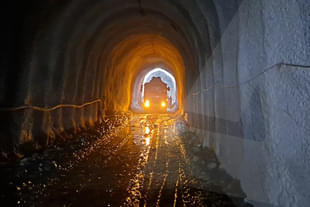Economy
India’s Path To Mineral Independence: First Tungsten And Cobalt Blocks Auctioned
Amit Mishra
Nov 08, 2024, 04:26 PM | Updated Nov 15, 2024, 05:35 PM IST
Save & read from anywhere!
Bookmark stories for easy access on any device or the Swarajya app.


India has successfully auctioned its first-ever tungsten and cobalt mineral blocks.
Launched on 24 June, the auction saw Hindustan Zinc Limited, a Vedanta Group subsidiary, emerge as the top bidder, securing mining rights for two tungsten blocks — one in Nayakkarpatti, Tamil Nadu, and another in Balepalyam, Andhra Pradesh.
Vedanta also secured a cobalt block in Shimoga, Karnataka, cementing its position in India’s critical mineral exploration.
The auction, conducted under the Mines and Minerals (Development and Regulation) Act of 1957, awarded composite licences (CL) for all three mineral blocks.
These composite licences (prospective-cum-mining) are granted for areas where the government has completed preliminary exploration, but further exploration by mining companies is required.
Under a CL, successful bidders are tasked with conducting detailed geological exploration to confirm mineral deposits. Once the mineral content is validated, bidders can apply to the state government for a mining lease. Before mining operations can begin, they must also obtain all required consents, permits, approvals, and no-objection certificates.
Why It Matters
Minerals such as copper, lithium, nickel, and cobalt are classified as critical minerals, as they, along with some rare earth elements, are essential for the world’s transition to clean-energy technologies.
Tungsten, also known as 'wolfram', is a metal of strategic importance and crucial for the industrial development of any country.
Used across industries — from semiconductors and consumer electronics to aerospace and medical devices — tungsten is prized for its high density and its ability to withstand high temperatures, according to the Plansee Group, an Austria-based tungsten processing company.
Currently, China dominates global tungsten production, accounting for over 85 per cent of total mine production. Combined with Russia, the two countries make up nearly 90 per cent of the world’s tungsten supply, with smaller contributions from Vietnam, Bolivia, Austria, and others, according to the United States Geological Survey (USGS).
As noted in the Indian Mineral Yearbook, a publication from the Ministry of Mines, India currently relies entirely on imports and recycling to meet its tungsten demand, as there is no domestic production of tungsten ore and concentrates.
Amid growing concerns about potential supply risks, India's recent success in auctioning its first-ever tungsten block reflects a growing awareness of risks in the critical minerals supply chain — and a proactive effort to mitigate them.
Cobalt Quest
Cobalt, the silver metal, is essential for the world’s transition to clean energy, with demand projected to triple by 2035 — primarily driven by the electric vehicle (EV) boom, according to the Cobalt Institute, an industry body.
According to an EU Joint Research Centre Science for Policy report, titled 'Cobalt: demand-supply balances in the transition to electric mobility', between 5.5 kg and 11 kg of cobalt is required in EV batteries.
The Democratic Republic of Congo (DRC) dominates global cobalt supply, accounting for 67 per cent last year — a trend expected to continue. However, concerns over the DRC’s stability, corruption, and child labour practices raise questions about the reliability of future supply.
Refining also presents a bottleneck, with China handling 66 per cent of the world’s cobalt refining. This Chinese monopoly, which is likely to persist, poses a risk for other nations dependent on refined cobalt.
Finland, a distant second, contributes just 10 per cent of the world’s refined cobalt. Both countries rely on feedstock from the DRC, making them vulnerable to upstream disruptions.
Although India has significant estimated cobalt deposits — around 44.91 million tonnes in Odisha, Jharkhand, and Nagaland — it currently meets its cobalt demand entirely through imports.
So, the recent auction of India’s first cobalt block is a pivotal step towards enhancing domestic exploration and building future supply chains for this critical metal.
India’s efforts to secure cobalt extend beyond land.
Earlier this year, India applied to the International Seabed Authority (ISA) for permission to explore the cobalt-rich Afanasy Nikitin Seamount, located in the central Indian Ocean, east of the Maldives and about 1,350 km from the Indian coast.
However, competing claims with Sri Lanka have paused India’s application, highlighting the geopolitical complexities surrounding critical minerals.
What Lies Ahead
India’s quest for critical minerals has only just begun. With less than 10 per cent of its potential strategic mineral reserves explored, India must ramp up efforts to locate and secure these essential resources.
New auctions, like the recent ones for tungsten and cobalt, are promising steps forward. Yet, to meet future demand, India will also need strong international partnerships and sourcing agreements with friendly nations to create a resilient and sustainable supply chain.





